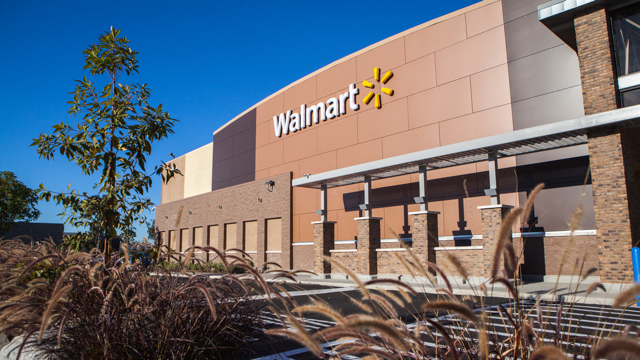Walmart Expands Offerings in Growing Rivalry with Amazon
August 8, 2018
To better compete with Amazon, Walmart is reinventing itself from a big box retailer into a tech powerhouse, starting with the 2016 purchase of Jet.com. Other recent deals in this vein include a partnership with Alphabet’s Waymo to provide rides to and from its stores; Uber, Lyft and Postmates deals for grocery delivery; and another with Japan’s Rakuten for Kobo e-readers. Last month, Walmart switched its cloud operations to Microsoft Azure and Office 365 and inked a five-year deal to work with Microsoft on AI projects.
The Verge reports that, “the Microsoft partnership might include helping open a cashier-less, brick-and-mortar retail store to compete with Amazon Go.” Walmart, which now has a tech incubator in San Bruno, California and another in Austin, Texas, is also reportedly trying to turn Vudu into “a legitimate Amazon Prime Video competitor by the end of the year.”
Walmart is, says The Verge, “a legacy retail brand — one of the biggest on the planet — that’s now fiercely hungry to compete and stay relevant in a world moving slowly but surely toward online commerce, on-demand delivery, and bundled services,” a model pioneered by Amazon.
Walmart reported $500 billion in annual sales in fiscal 2018, earning “more revenue than any other corporation in the U.S.” Amazon moved to counter Walmart’s influence by acquiring Whole Foods, which helps “Amazon further branch out into everyday purchases as well as last-mile delivery of groceries and household goods.”
Walmart’s revenue may be huge, but so are its operational costs; it “employs more than 2 million people worldwide and more than 1.4 million in the U.S. alone.” Although Walmart enjoys “quarterly profit and sales that are typically more than double the size of Amazon’s, investors see Walmart as worth about a quarter of Amazon’s nearly $1 trillion market valuation … largely because Amazon continues to grow, specifically in key areas like cloud computing.”
Walmart’s growth, in comparison, is “miniscule” and “its profits are also declining as it continues to spend money to beef up its online operation and compete with Amazon.” “Walmart believes today … that in order to be relevant in the future, they have to get the technology — the relationship with the consumer through technology — into their physical environment,” said Gartner research vice president for retail Robert Hetu.
Although groceries are an $800 billion market, only 2 percent of purchases are done online,” making grocery delivery to be “Amazon and Walmart’s biggest battleground” in the future. Amazon has jumped on U.S. food buying trends, with its Prime Pantry program shipping “non-perishable goods and household supplies, while its programmable Dash buttons now let Prime customers reorder everyday items like laundry detergent in mere seconds.” The company is also “integrating Whole Foods deliveries into its Prime Now same-day delivery initiative.”
According to Reuters, Walmart is experimenting with ways to build out a grocery delivery network. Hetu said that the winner of the grocery delivery competition will be the company that “understands human behavior better,” something that Amazon head Jeff Bezos has “prided himself on throughout Amazon’s rise.”
Related:
Walmart Pilots a Grocery-Picking Robot to Fulfill Customers’ Online Orders, TechCrunch, 8/3/18


No Comments Yet
You can be the first to comment!
Sorry, comments for this entry are closed at this time.